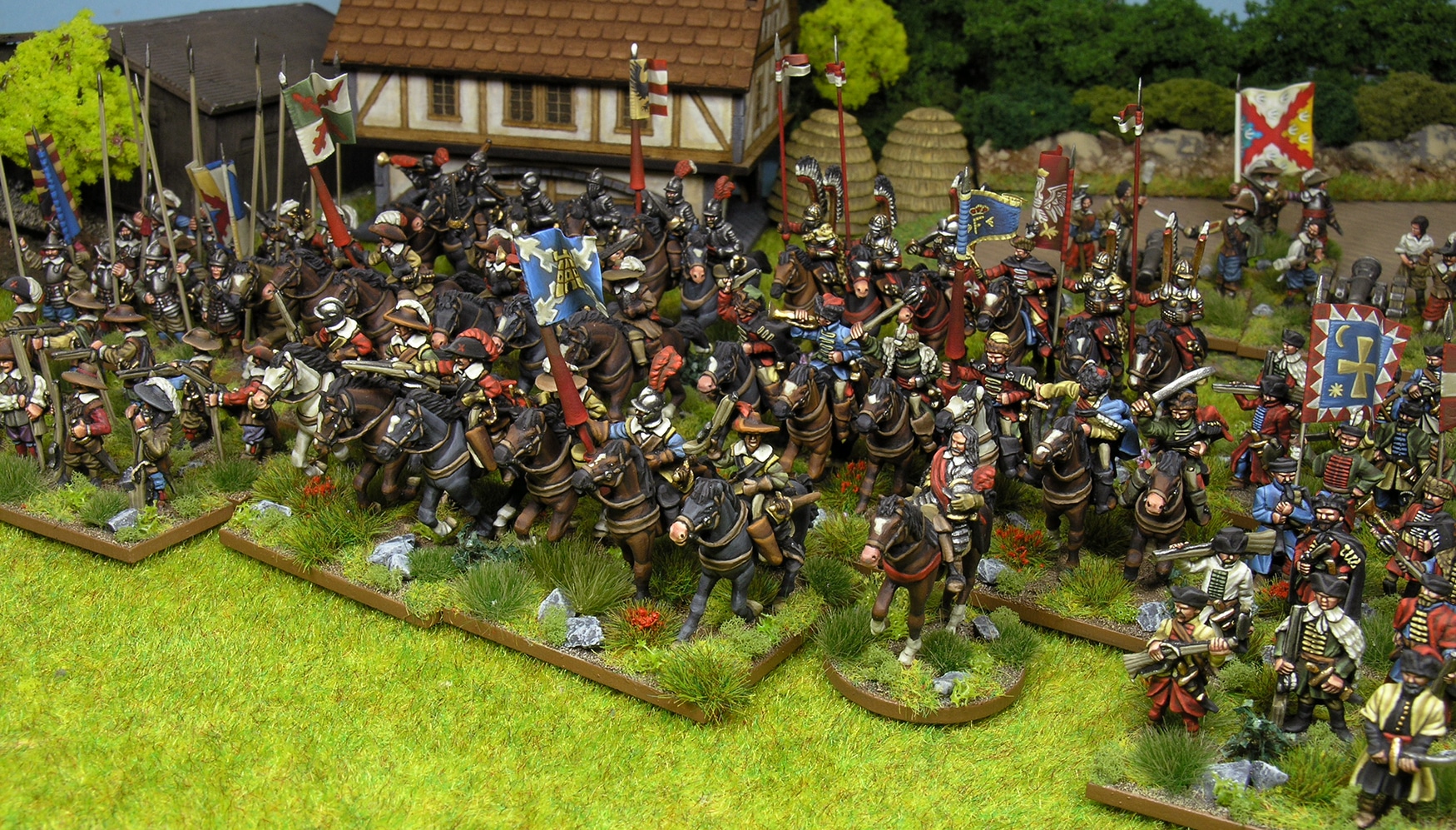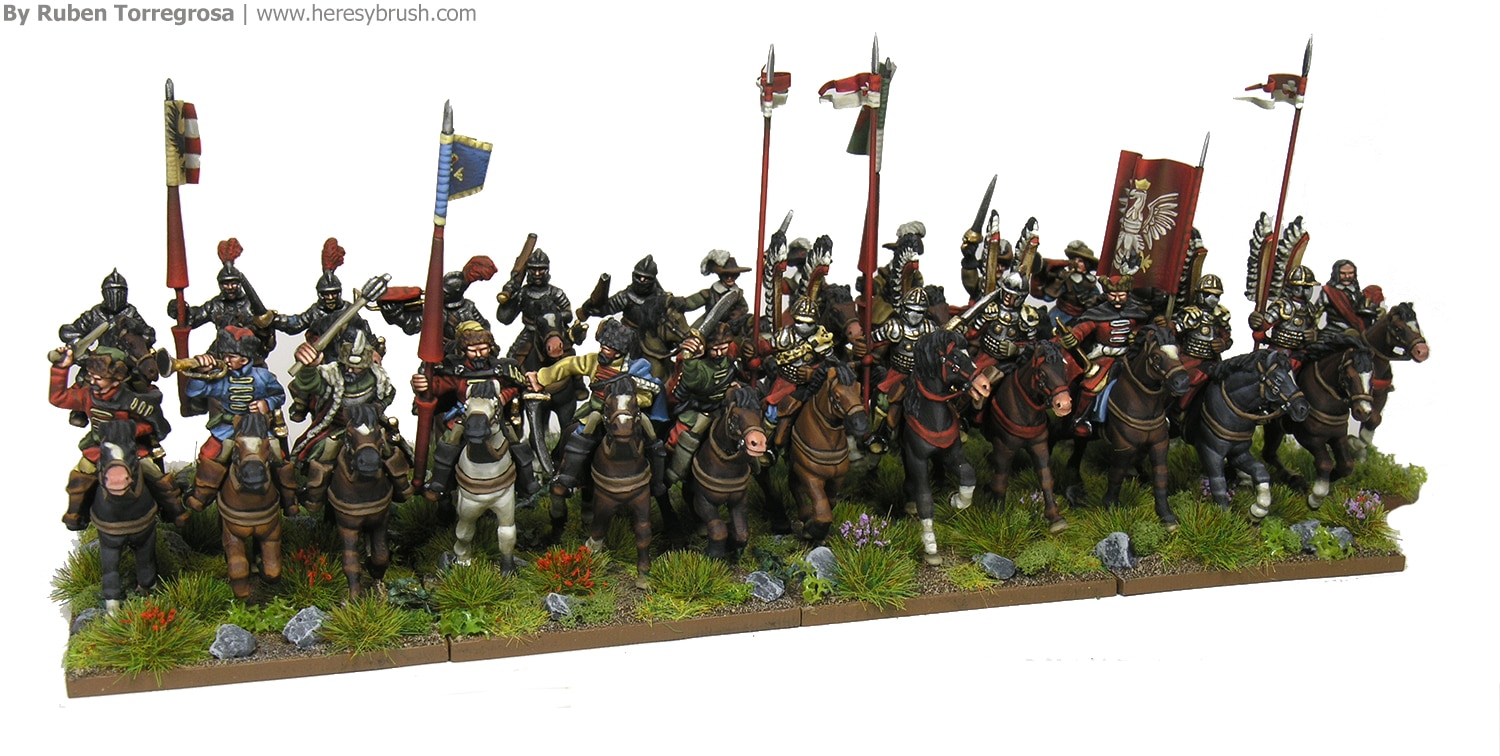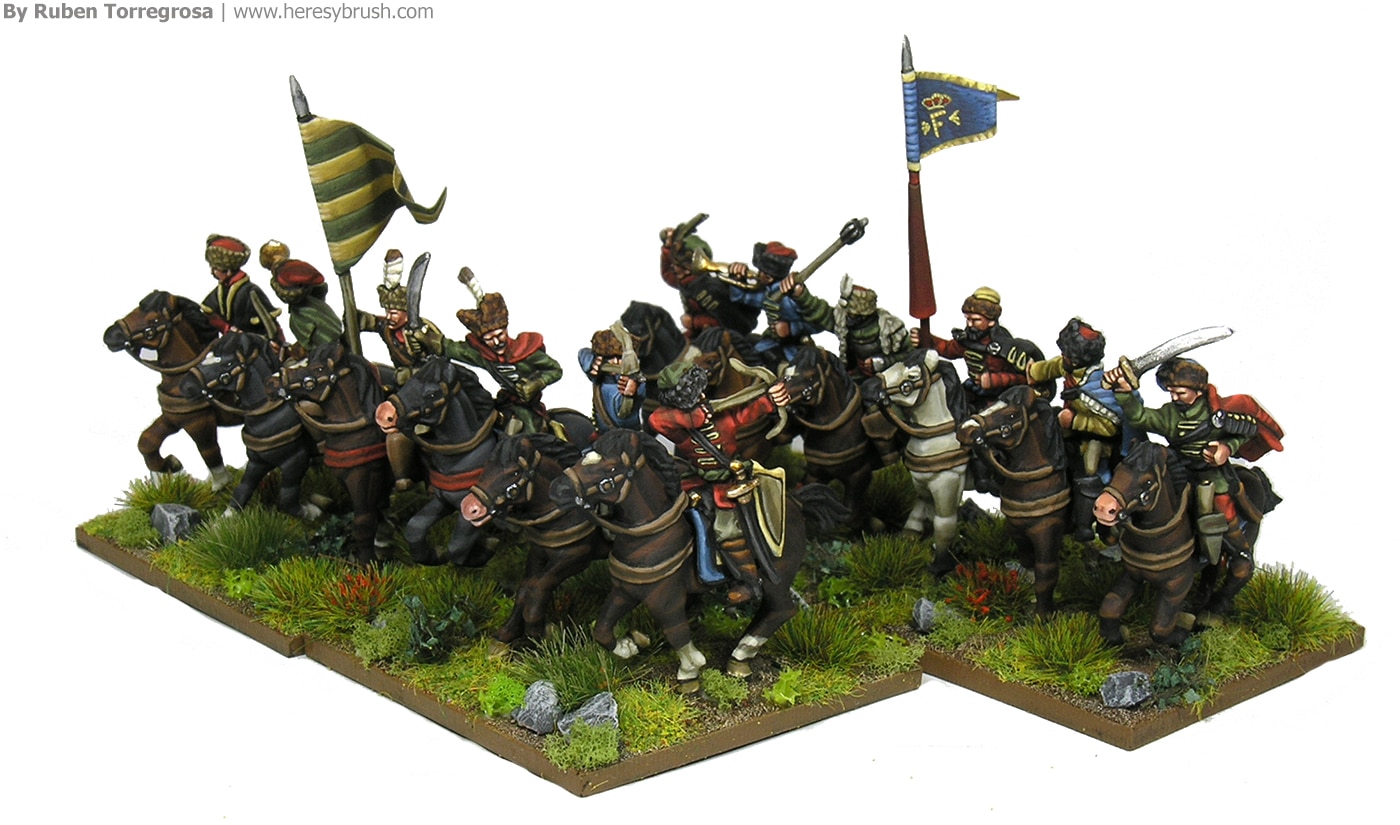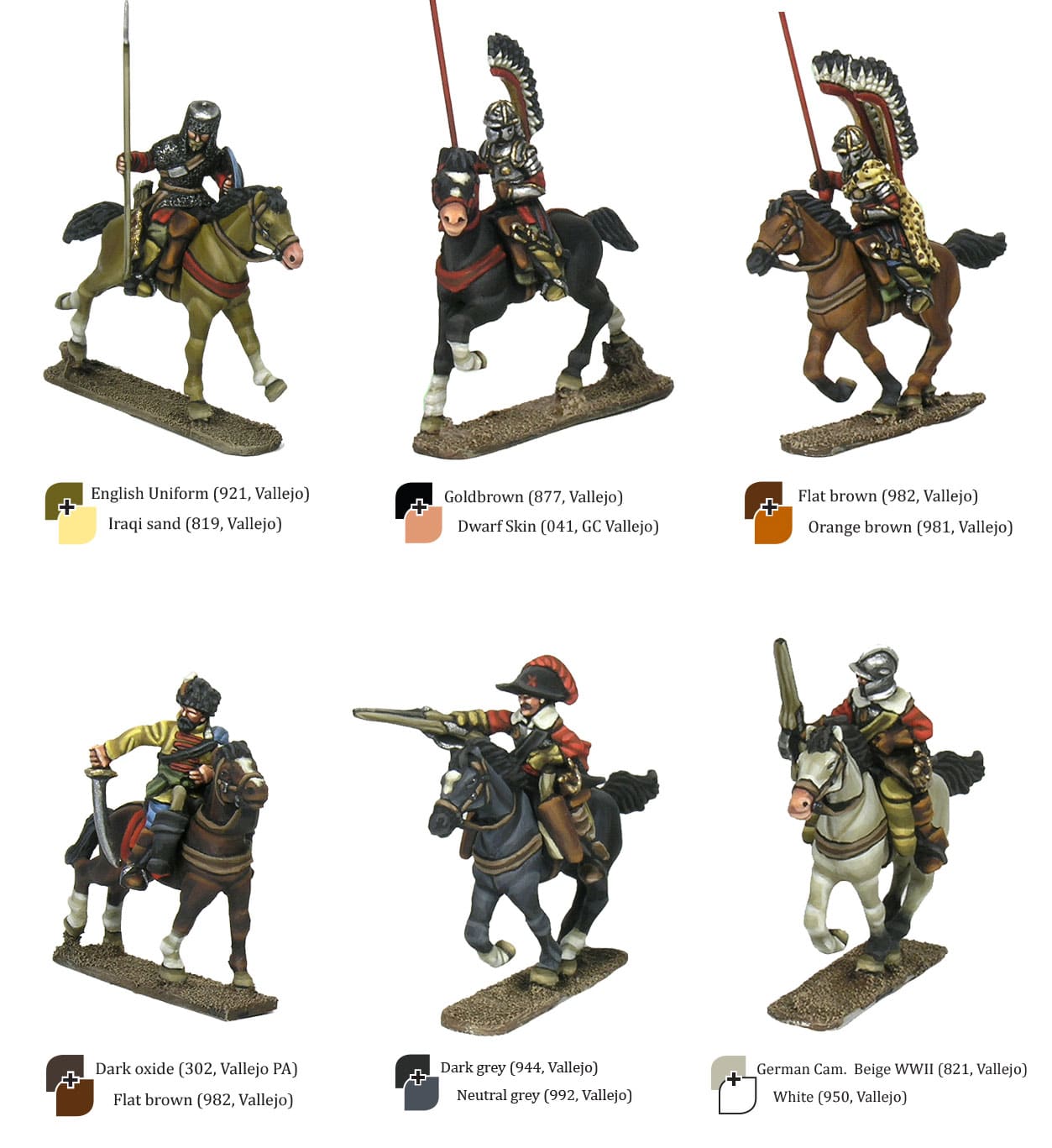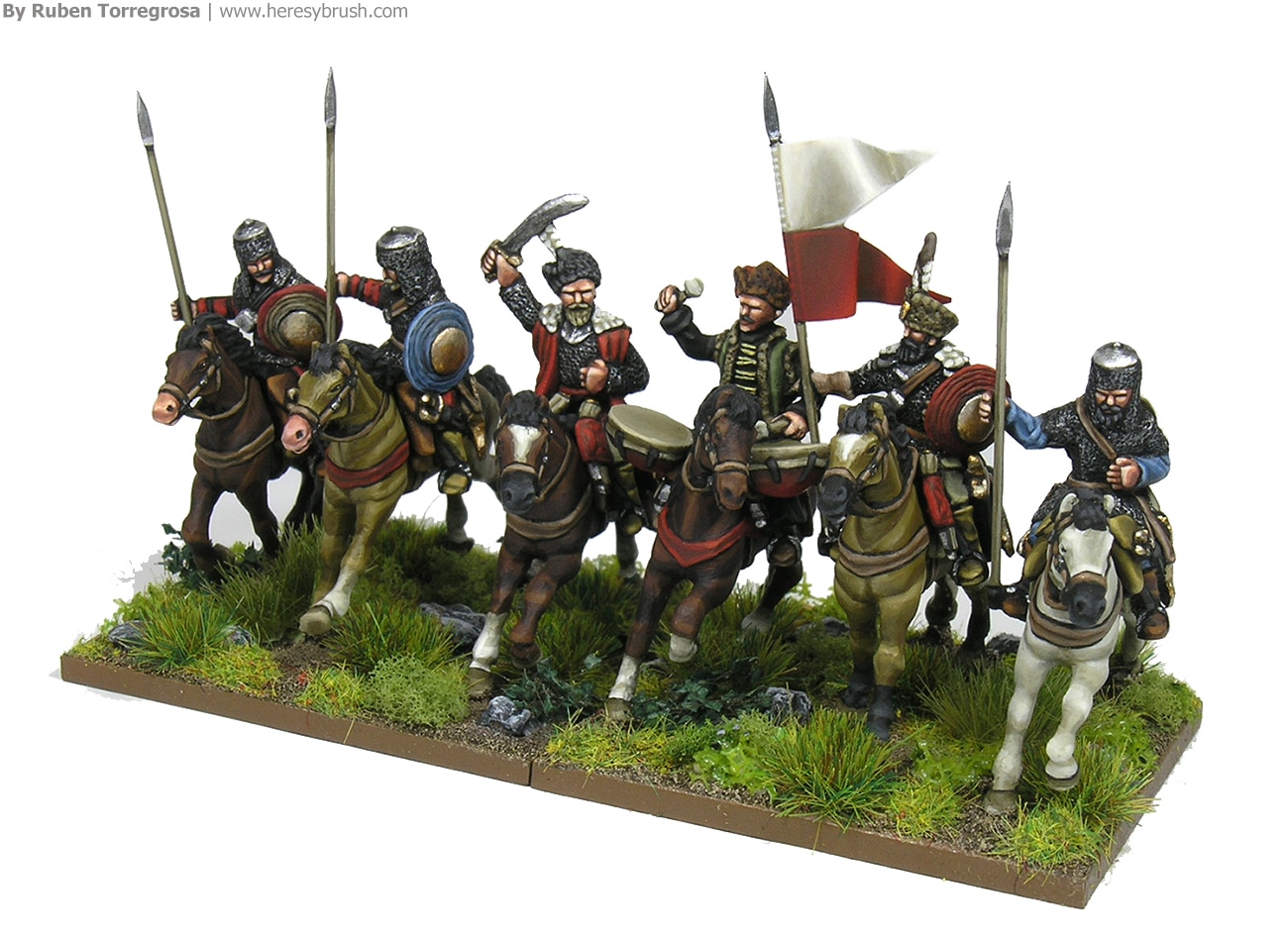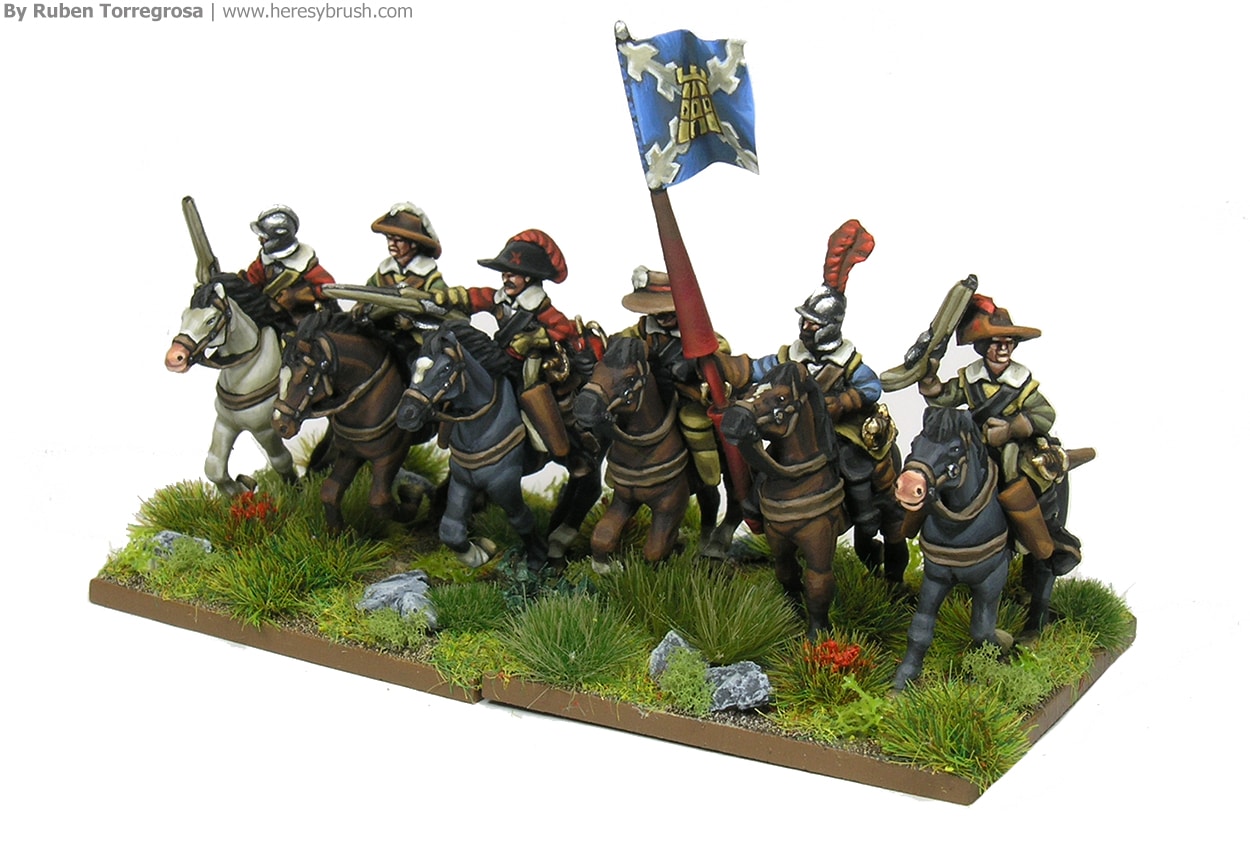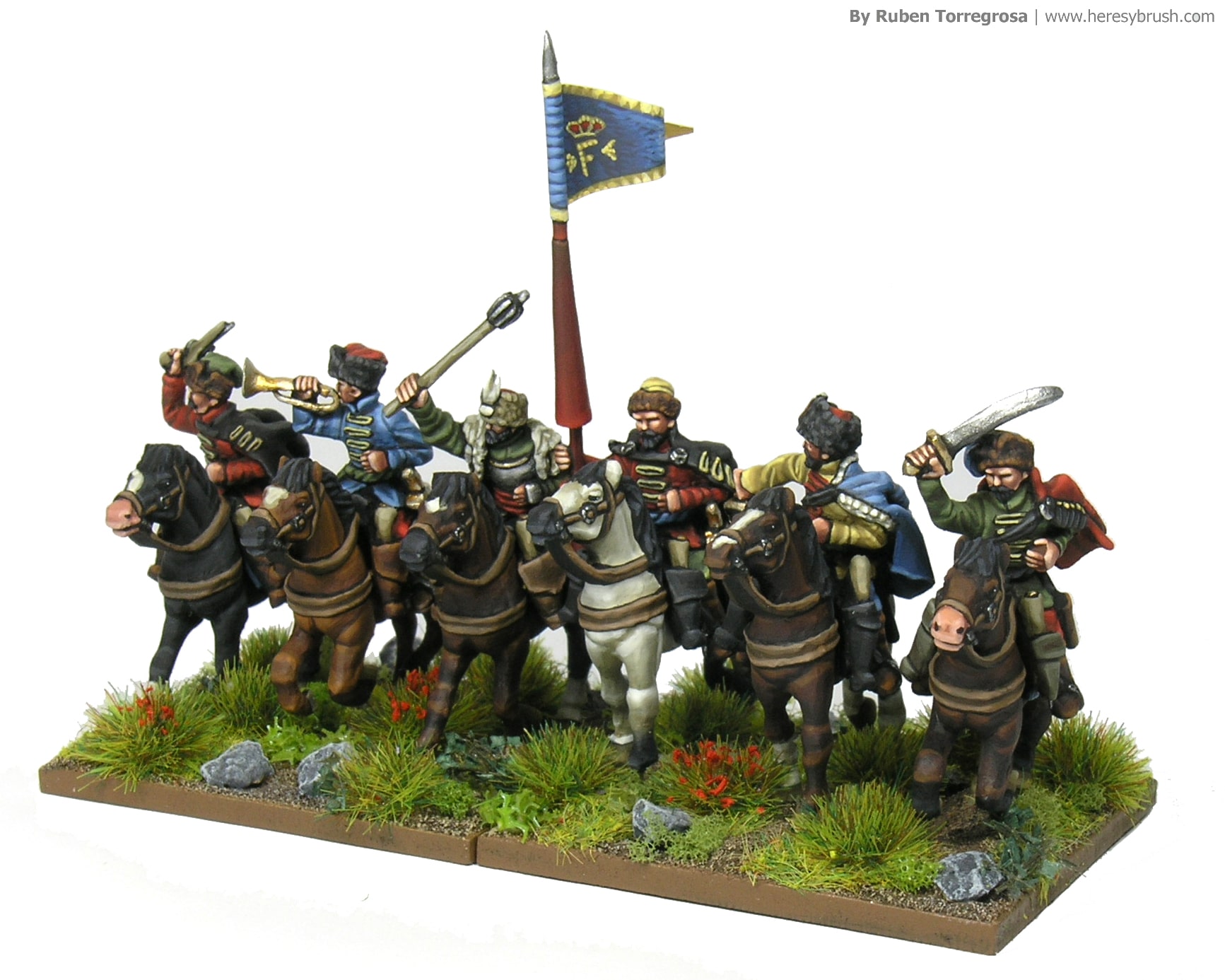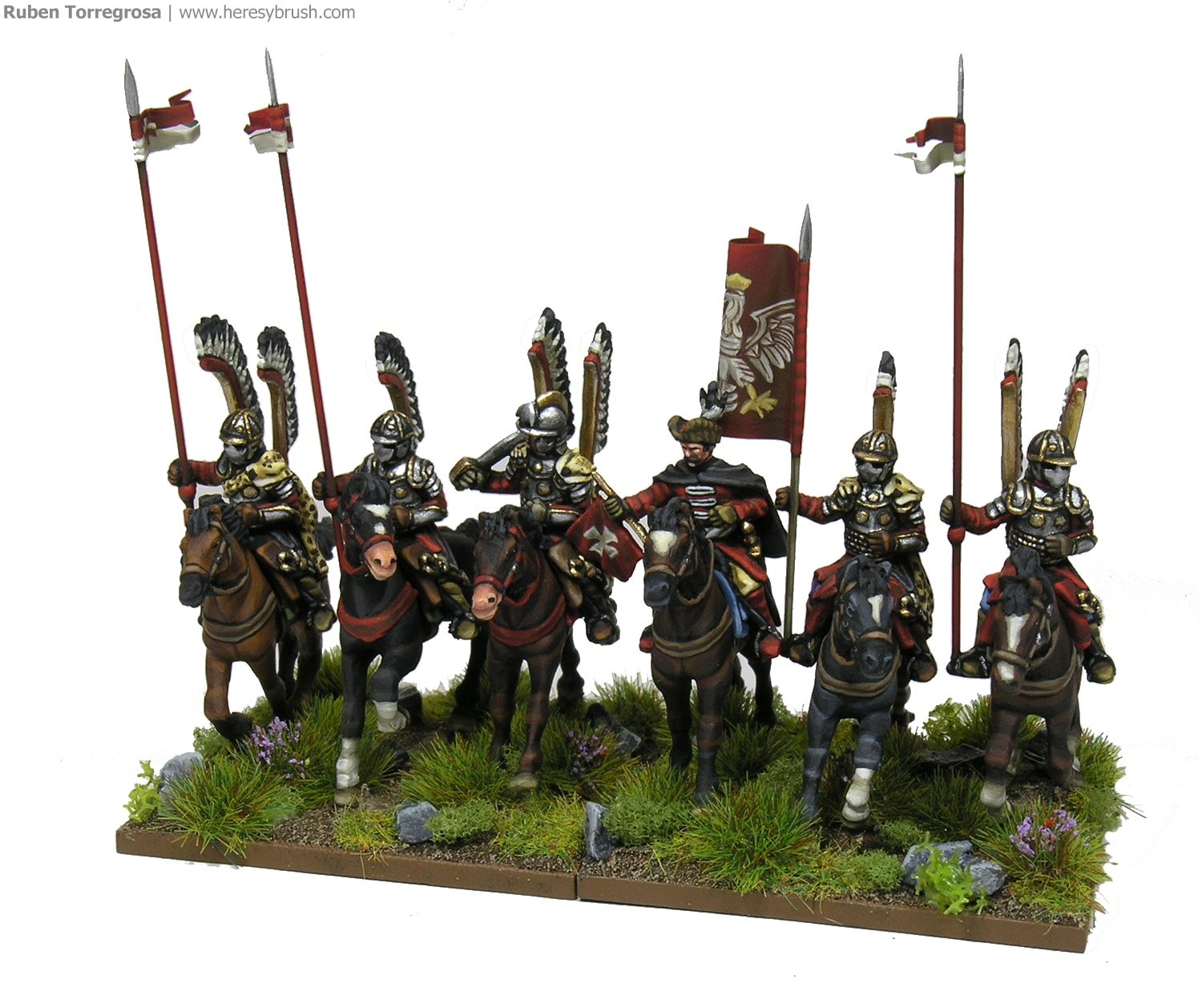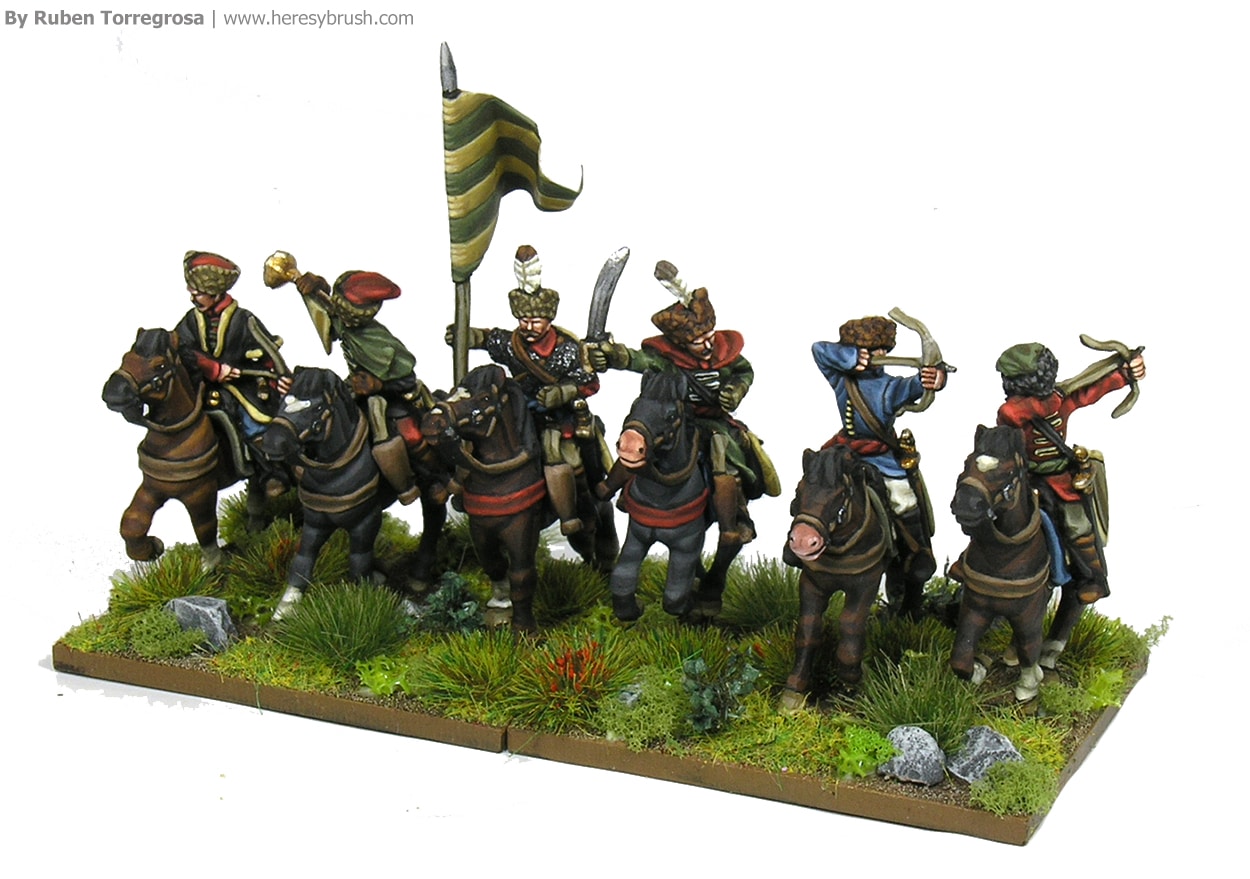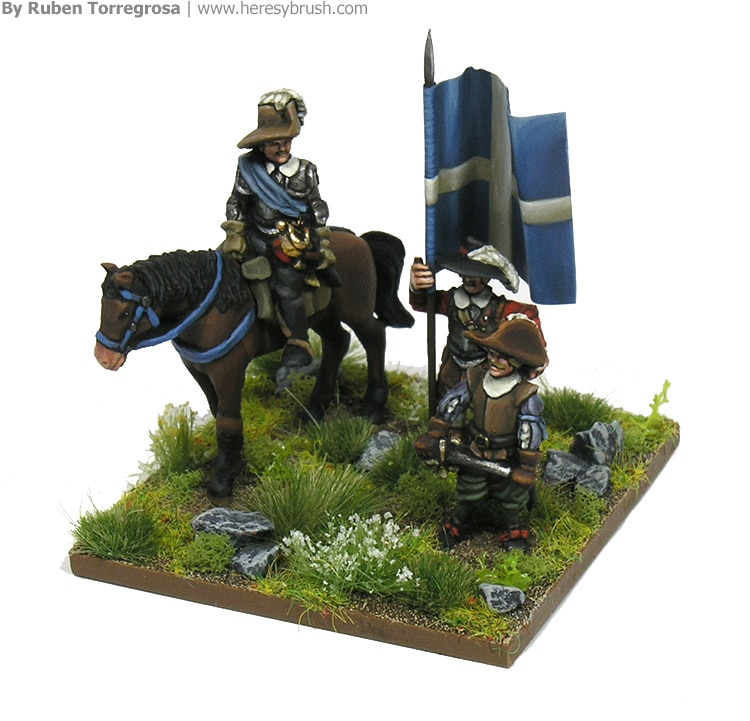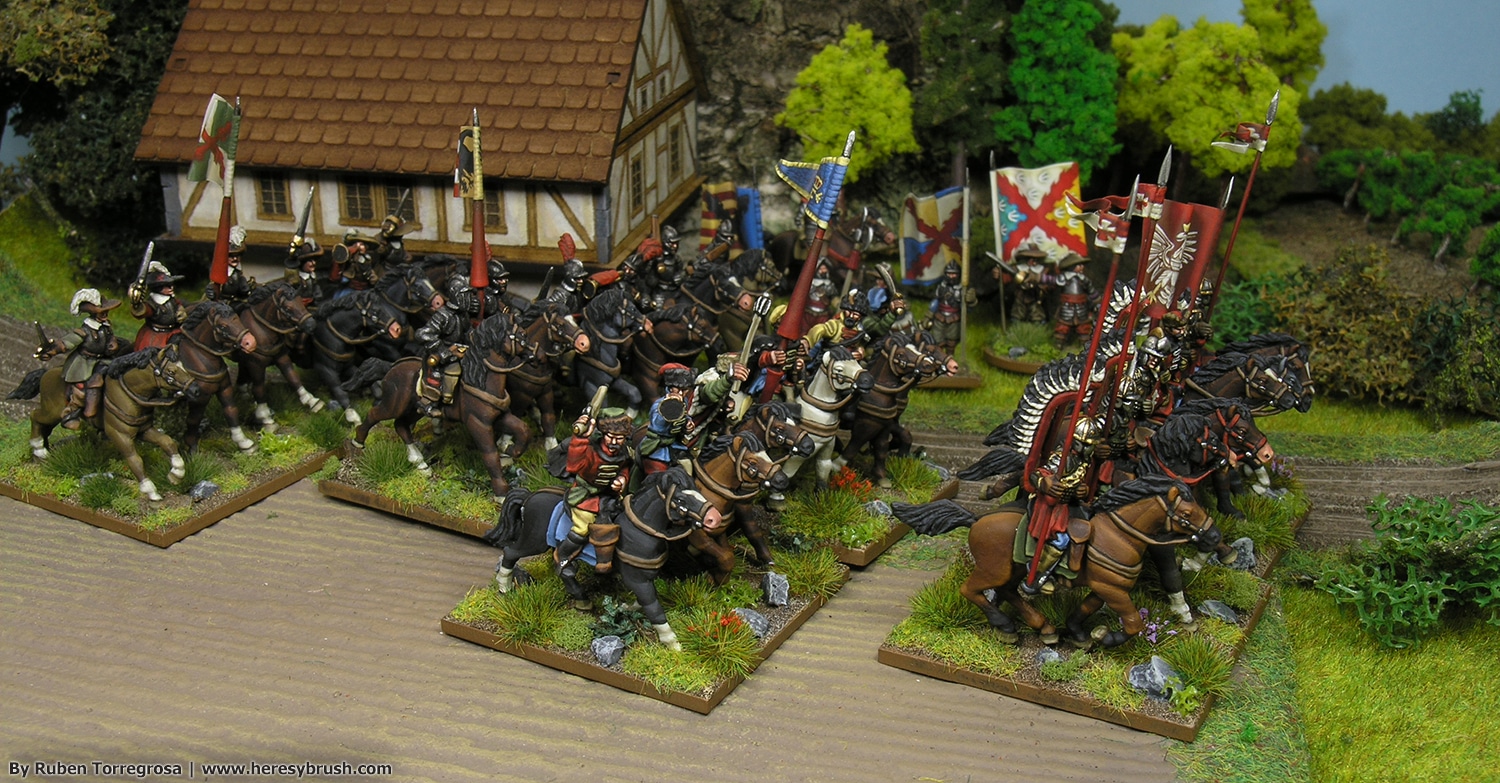I hate painting horses. It is a fact. It is repetitive and monotonous. And I have never found it fun. However, here I am; I continue painting horses (at least another almost forty for my Thirty Years War army…). And I am not going to stop because although I hate painting horses, mounted units are very impressive, aren´t they? Somehow, I would like to share with you some tips I have learnt after painting several mounted units, although I have to concede that some of them are personal opinions. But you will agree with me that is not the same to paint a single horse (for a General, for instance) to paint a whole unit. It requires a different approach. Thus, we are going to discuss here how to paint mounted units. And whether you hate painting horses like me, this is your post!
I am not planning to show here a step by step about how to paint horses, but I would like to share some tips and discuss some points that I find interesting. And although the miniatures that I show in this post are 15mm from Totentanz Miniatures, the ideas that we are going to see are absolutely applicable when painting larger scales.
Which paint should we use to paint horses?
Horse’s genes lead to a wide spectrum of colors that humans have denominated with different names, such as dark bay, liver chestnut, dun, palomino, blue roan and so on. Very poetic names but not intuitive. To simplify and facilitate this painting guide, these different phenotypes can fall into three groups: light, middle and dark. For instance, red-brown colors: chestnut (light), light bay (middle) and dark bay (dark). And we could do the same when observing yellow-brown colors, white /grey, etc. Obviously I am leaving out many other variations, such as horses with dotted patterns or stains, but I would like to keep this as simple as possible. I recommend you to firstly check out different horse colors on internet or books. And then, chose four or five colors that you find easier to paint, that you like the most or whatever makes you feel that if you buy a horse, it would be one those ones. You can see my choices below beside the paints that I usually use. Basically, besides white (light) and black (dark), I use three middle colors (grey, red-brown and yellow-brown) and one dark color (dark brown).
Which colors should we use when painting horses of a mounted unit?
We have already chose what colors we like. So, what now? Should we paint the whole unit with one of them? Or should we use all? In my humble opinion neither a single color nor all of them. Try to not paint each horse in a different color because although it might be real, detract attention from the soldiers (the real star of the show here) and I honestly find it a bit awkward. In the same way, do not use the same color for all of them. We want a little bit of contrast in our unit! Then, what? At this point, you have probably observed that I repeat a lot one color in my units, the dark brown. Exactly. This is the color that I like to paint the most (or in other words, the color that I find less tedious to paint) because I like the paints it requires, it is easy to highlight and it contrasts very well with whatever is mounted on it. Therefore, you can choose one color among the others based on how easy is for you to paint it or based on any other feature. And we will use this color to paint the half of the unit. For example, in my 6-horse units 3 horses are always dark brown. Always. If painting horses is tedious, at least try to make it as less boring as you can!. On the other hand, to paint the three remaining horses of the six-horse unit, I usually chose another two colors: I paint two horses with the less tedious color and the remaining one with another color. If your unit is larger than six guys, you can choose a forth color. Note, we must not repeat the same combination of colors and numbers in different units. Actually, thanks to this we can easily introduce variation within the army by simply combining differently how the three remaining horses are painted. For example, the “unit A” may show two grey horses and one black; while the “unit B” could have two black and one yellow-brown horse. This reinforces the feeling that every unit is unique within the whole army, whereas using a limited number of colors (4-6 horse colors) maintain the coherence of the army.
Summarizing, you can paint the half of the unit with the easiest color to paint and the remaining horses with another 2 or 3 different colors. And it doesn´t really matter which color you choose, because all of them are real and therefore possible. But try to mix light and dark colors in the same unit to make it more striking. For example, in a 6-horse unit: 3 dark brown, 2 grey and 1 white. On the other hand, I usually paint the horse mane and tail with black. However, I have to say that these parts can have the same color of the horse hair and in the light horses they are usually light as well. However, I like the black because is so easy to paint and it provides a little bit more of contrast.
How to prevent the monotony?
In this post we have been only talking about plain colors; and therefore, although we use different plain colors, the horses might look like “clones” at some grade. Nevertheless, we can easily solve this problem by painting singular marks on horses: facial marks and leg socks. Facial marks are basically white hair areas that appear on the head of the animal and that can adopt very different shapes and sizes. Google “Horse marking” to find some examples. On the other hand, leg socks are white marks as well but when they are absent, the horse seems to have “black socks”. Either way, the socks appear in very different shapes and sizes, as well. Some of them are almost invisible (Coronet) whereas others cover almost the half of the leg (Stocking). And most importantly, this white marks can appear in one, two, three or four feet; and we can exploit this to increase the variety within the same unit –it is popularly accepted that the hooves of horses that have white feet are softer than the hooves of horses with dark feet; and this is very important if you want to buy a racing horse!:
“One white foot, buy him.
“Two white feet try him
“Three white feet, doubt him.
“Four white-feet do without him.”
In addition, we can leave the muzzle in the same color than the rest of the horse; or paint it in black or pinky color, depending on the base color of the horse. For example, we can exploit the contrast in a white horse by painting the muzzle with black. Furthermore, our war horses usually have harness, saddle or/and a blanket. We can use different colors to paint these pieces to increase the singularity of each horse; although try to not paint all of them in different colors! For example, I usually paint the harness always with beige brown (because I find it the easiest way), but sometimes one or two horses have red harness. Note, I used red here because of this unit; I would have used blue when painting a French or Swedish horse.
I hope that these tips can help you a bit when painting mounted units. And if you have any other tip, please, share it with us!
